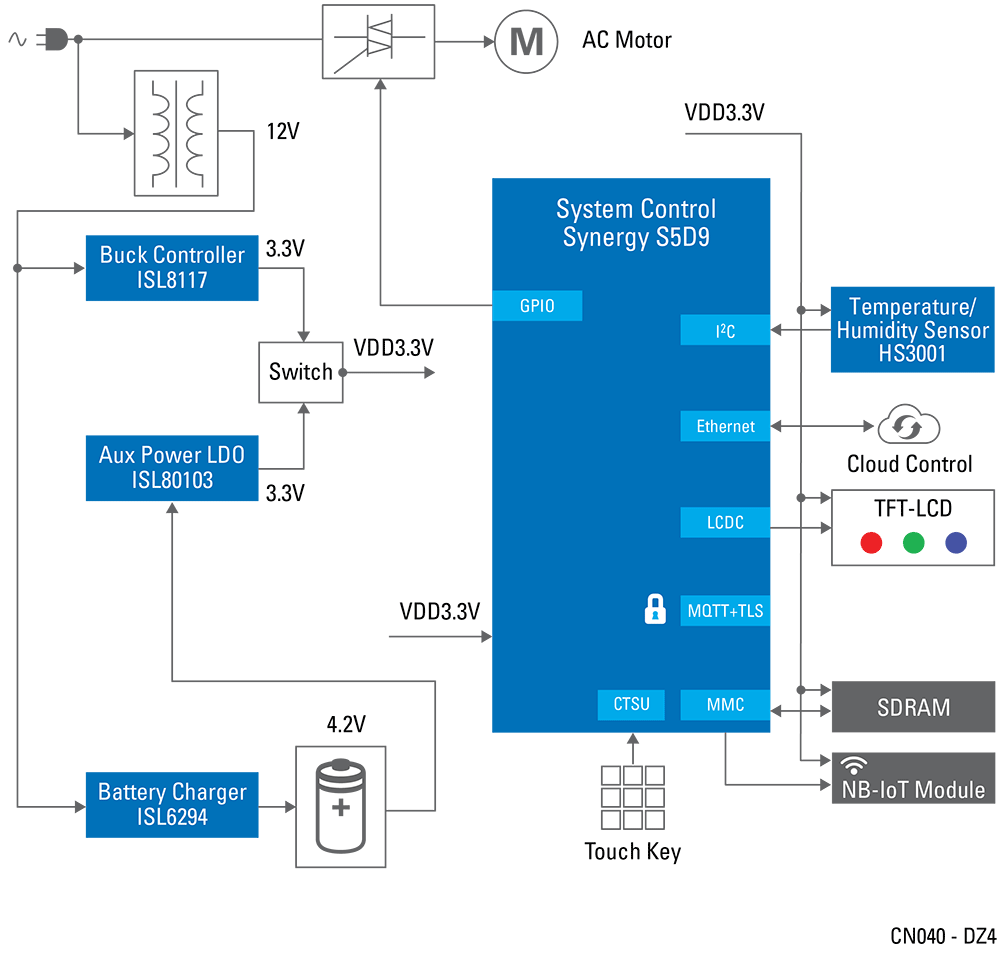A helping hand for power combinations
Designing modern devices requires the most efficient and cost-effective power sources available, but which combination works best, asks Lee Turner, Farnell
A major problem is knowing which microcontrollers are best suited to which interfaces and power devices, in order to create the specific embedded solutions that designers require. To solve this challenge for design engineers, Farnell has developed a single source on its website, bringing together complementary microcontrollers, SoCs and power management ICs from Renesas, with IDT’s RF, high-performance timing, memory interface, real-time interconnect, optical interconnect, wireless power and sensor devices. (Renesas bought IDT in March 2019 and Intersil in 2017.)
The optimal power combination selected depends on the application. Here are a few examples.
IoT sensors
An air quality monitor used in IoT building automation is powered either by chargeable battery or 5V USB. It can also combine IDT’s ZMOD4410 gas sensor and HS300x humidity sensor family with an RL78/G14 microcontroller from Renesas to check for gases and measure/improve air quality.
In other building automation applications, a combination of these sensors and the Synergy S5D9 microcontroller from Renesas, which has a USB 2.0 high-speed module (compliant with USB Battery Charging Specification 1.2) and an on-chip transceiver with voltage regulator.
 Figure 1: A vending machine example, using Intersil, IDT and Renesas devices
Figure 1: A vending machine example, using Intersil, IDT and Renesas devices
In the case of a vending machine, a combination of battery charging and AC power is more suitable. For today’s vending machines, the Renesas Synergy S5D9 microcontroller has on-chip hardware security, LCD controller and qualified Synergy Software Package (SSP) for quickly connecting to the cloud. This can be used with IDT’s HS300x humidity and temperature sensor with power support from Intersil’s ISL8117 DC/DC controller, ISL6294 battery charger and an ISL80103 low voltage, single output 3A linear regulator.
Smart homes
A cordless vacuum cleaner uses a powerful battery/AC power combination but also features a brushless DC (BLDC) motor which has a reliable motor control circuit. This consists of a Renesas 80V MOSFET driver and low power RX24T microcontroller, a high accuracy cell balancer and a battery charger. Using multiple regulators– including a compensation-free, synchronous buck regulator and single output low dropout regulator – can detect any issues with power supplies for driving BLDC motors can be detected through the use of the multiple regulators. The design also includes a Renesas digital current sense and voltage monitor.
A final example is an induction hob. The Renesas RX23T 40-MHz 32-bit microcontroller is designed for complex inverter control algorithms for induction hob control and inverter heaters, while the RX130 microcontroller has an enhanced touch interface and 5V operation support. Both are supported by IDT’s HS3002, low power, relative humidity and temperature sensor.





